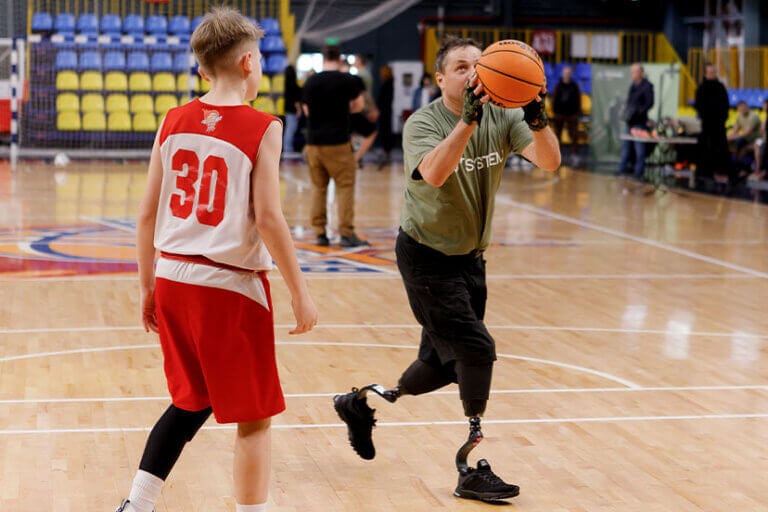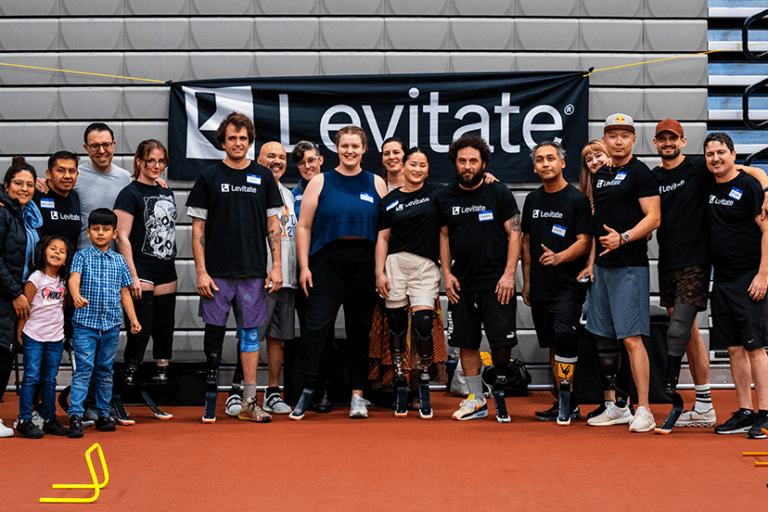Like for so many regular two-legged folks, being introduced to the world of amputees can come as a huge shock. Especially the hidden hardships and challenges that people face when returning to sports came as a surprise to Kelly.
“People who had a new injury or were recently left as an amputee, struggling to figure out the right fit for them and fighting to get back their regular lives, was very surprising. You see people walking around and you think it’s so easy, but there’s a lot you don’t see.”
“On the flipside I was really surprised at what the potential is in some of these athletes. How strong, fast and athletic they can actually be.”
Kelly even managed to try the Levitate running blade on a pair of boots, which highlighted the physical challenges bilateral amputees face when wanting to give running blades a go.
“I had to hold people’s hands,” she says with a big smile. “It took me a while to get independent. I can’t imagine what some of these people have to go through in order to get comfortable just living their lives with a regular prosthetic device.”




